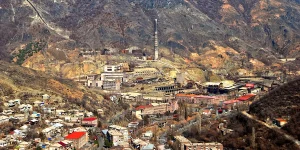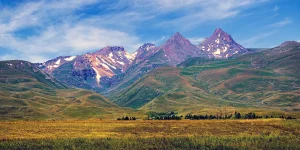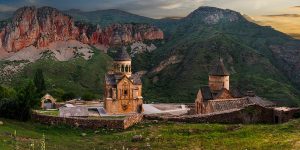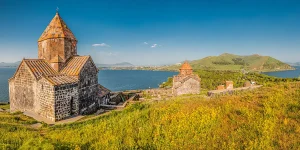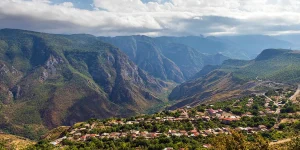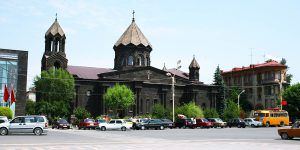Shaping Your Armenian Journey: Key Destinations to Explore
Armenia offers travelers a unique blend of ancient history, natural beauty, and warm hospitality. As the world’s first Christian nation, its landscape is dotted with centuries-old monasteries set within mountains and expansive plains. Beyond its historical depth, Armenia offers a vibrant contemporary scene, particularly in its lively capital. This guide explores the best places to visit in Armenia, providing practical insights for an enriching journey.
Table of Contents
Quick note on our guides:
This article lists places in Armenia worth an overnight stay — ideal bases to start mapping your route. It’s opinion-free, so you can choose what fits best. For personal experiences, see our Armenia stories. For activities, check “Best things to do in Armenia” and for standout sights, see “Best things to see in Armenia”.
Yerevan: The Pink Capital
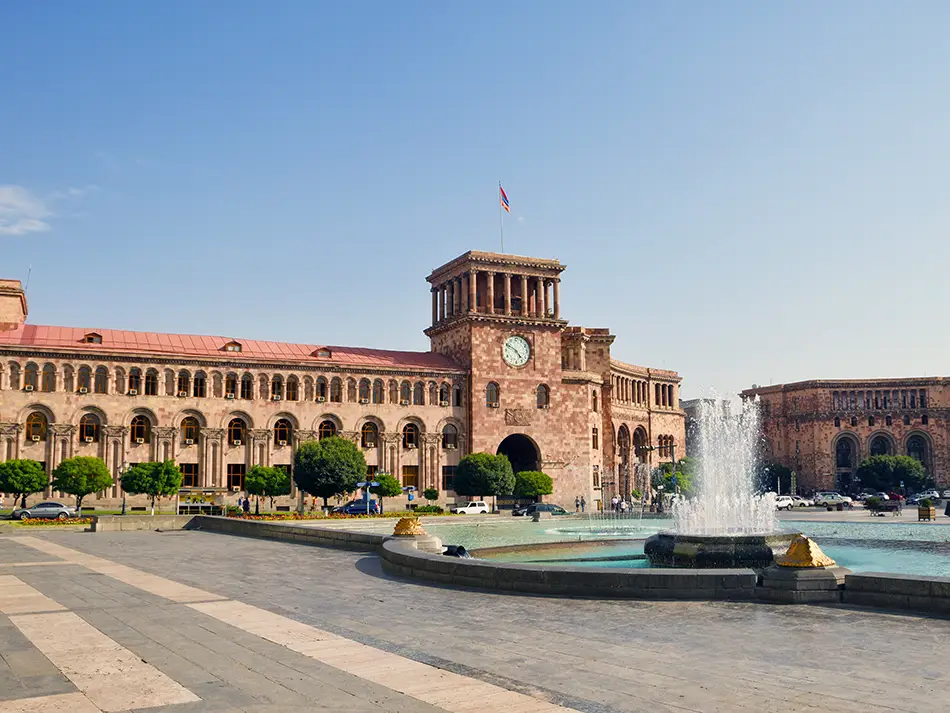
Yerevan, Armenia’s capital, blends Soviet-era architecture with a modern cultural scene. The city is built from distinctive pink tuff stone, a material that gives it a unique appearance. This creates an inviting atmosphere with wide boulevards, busy cafes, and significant cultural landmarks. It also serves as an excellent base for exploring central Armenia.
Yerevan Highlights:
- Cascade Complex: A monumental stairway adorned with modern art installations, offering city views and distant glimpses of Mount Ararat on clear days.
- Republic Square fountains: A central plaza with a nightly light-and-music show during warmer months.
- Vernissage Market: An open-air market with handcrafted souvenirs, carpets, and local artwork.
Fun Fact
Yerevan is one of the world’s oldest continuously inhabited cities, predating Rome by almost three decades! It was founded in 782 BC.
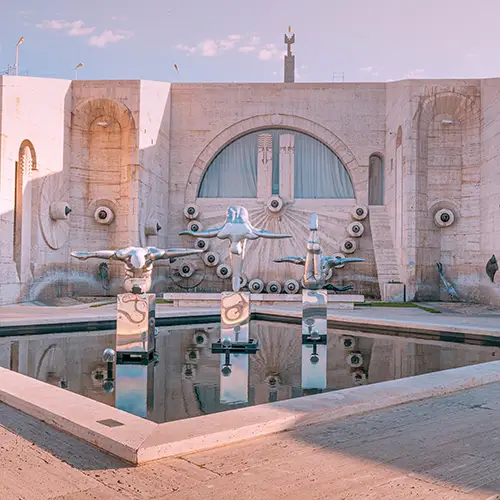
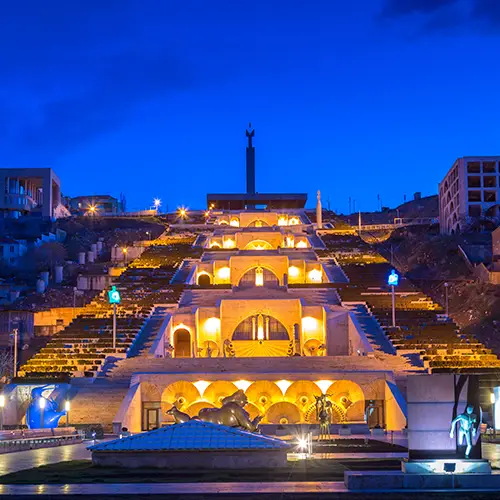
How to get there: Yerevan is served by Zvartnots International Airport (EVN), located about 12 kilometers west of the city center. Taxis and public minibuses connect the airport to various parts of the city. Within Yerevan, the metro, local buses, and taxis are convenient for getting around.
Where to stay: Yerevan offers a wide range of accommodation, from international hotel chains and boutique hotels in the city center (Kentron district) to budget-friendly guesthouses and apartments throughout the city. Many options are available around Republic Square and the Opera House area.
Dilijan: The “Armenian Switzerland”
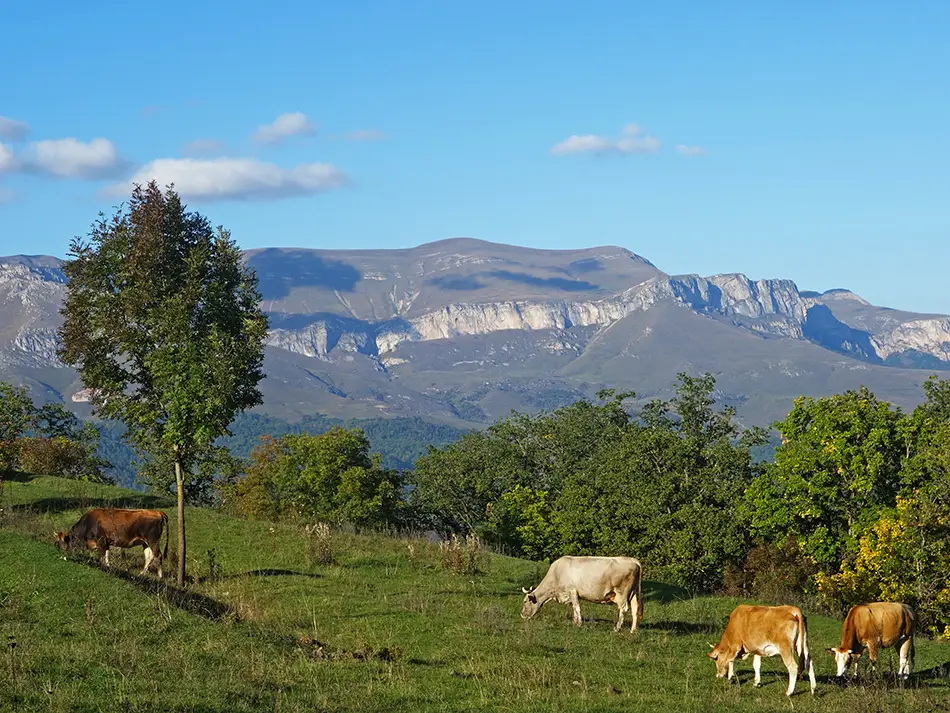
Tucked in the forested mountains of Tavush Province, Dilijan is often referred to as the “Armenian Switzerland” due to its green landscapes and fresh air. It is a peaceful retreat, ideal for nature enthusiasts and those seeking a quieter pace.
Highlights:
- Haghartsin Monastery: A medieval monastery complex set within a forest, creating a serene atmosphere.
- Sharambeyan Street: A restored Old Town section with craft shops and traditional stone houses.
- Parz Lake: A calm lake reflecting the surrounding trees, suitable for walks and relaxation.
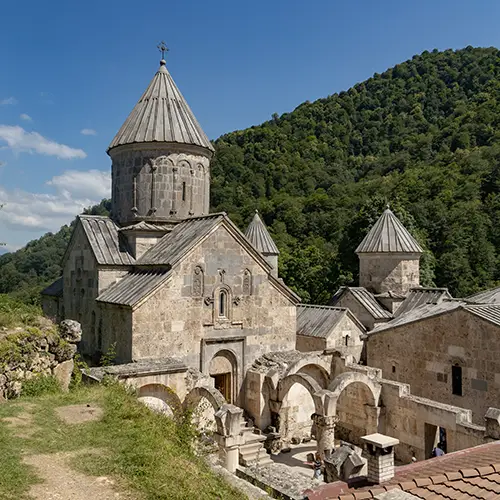
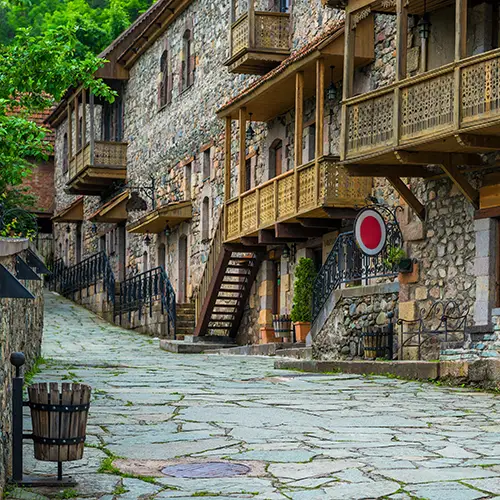
How to get there: Marshrutkas depart regularly from Yerevan’s Northern Bus Station to Dilijan. The journey takes approximately 1.5 to 2 hours. Taxis can also be hired for a more direct route.
Where to stay: Dilijan offers various guesthouses, small hotels, and resort complexes, many of which are nestled in the green surroundings, providing a tranquil stay. Look for options near the old town or within Dilijan National Park for direct access to nature.
More info: Dilijan Ultimate Guide
Insider Tip
Beyond the main monasteries, Dilijan National Park offers numerous hiking trails, including routes to more secluded monasteries like Goshavank or Jukhtak, providing deeper immersion in the natural surroundings.
Goris: Near Ancient Cave Dwellings
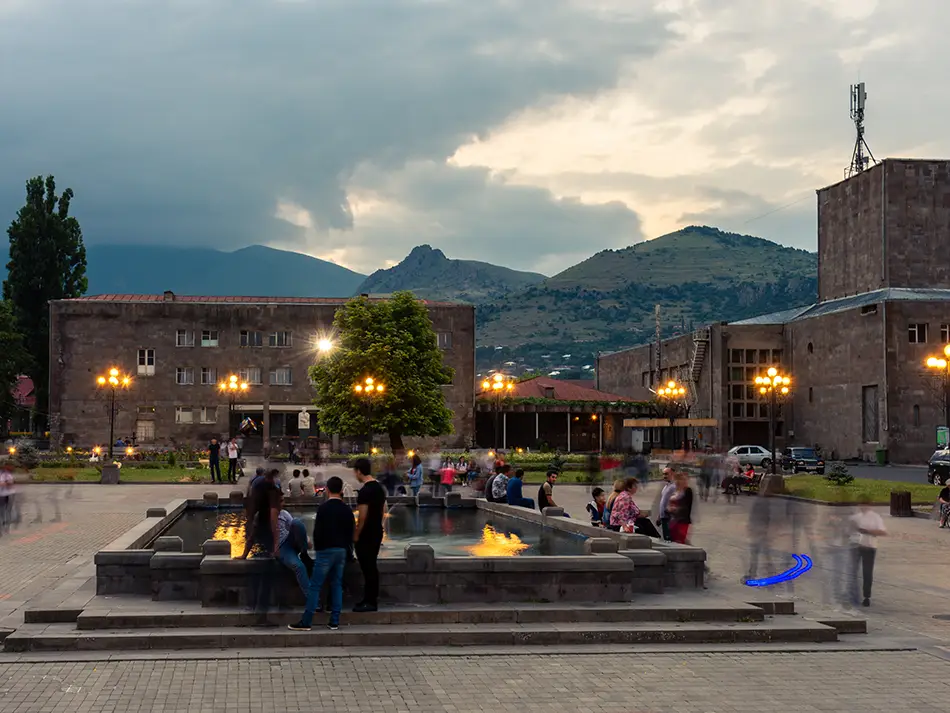
Goris is a town built of stone, located in the Syunik Province. It is known for its proximity to ancient cave dwellings and unique geological formations, offering a glimpse into early human settlements.
Highlights:
- Old Khndzoresk Cave Village: An ancient settlement with homes carved into rock, accessible by a suspension bridge across a gorge.
- Rock formations: The area around Goris features distinctive rock pillars and formations.
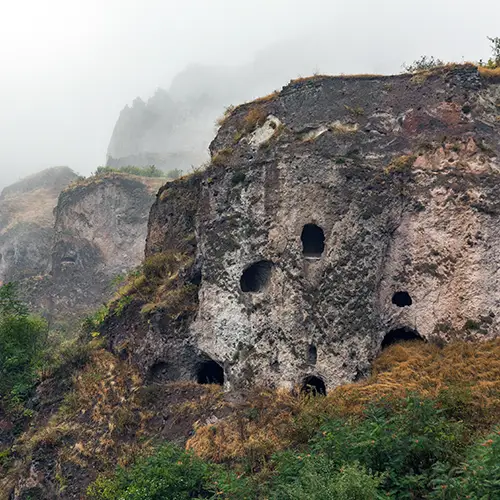
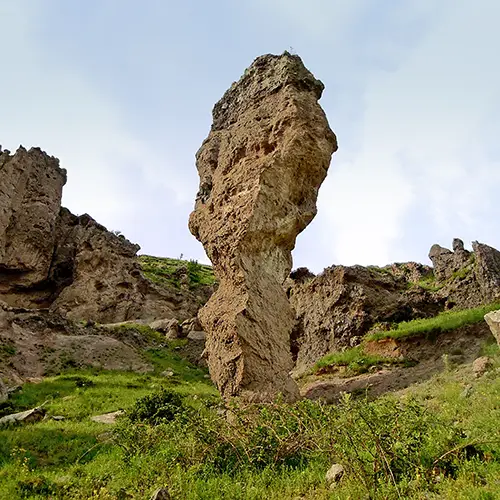
How to get there: Marshrutkas run from Yerevan’s Southern Bus Station (Sasuntsi David Metro Station) to Goris, with a journey time of around 4 to 5 hours. Shared taxis are also an option, often quicker.
Where to stay: Accommodation in Goris includes hotels, guesthouses, and family-run bed and breakfasts, often providing insights into local life and home-cooked meals.
Read more about Goris here.
Fun Fact
The Old Khndzoresk Cave Village was inhabited until the 1950s. At its peak, estimates suggest a population of up to 15,000 people, using a complex system of ropes and ladders to navigate the multi-layered dwellings.
Jermuk: The Spa Town
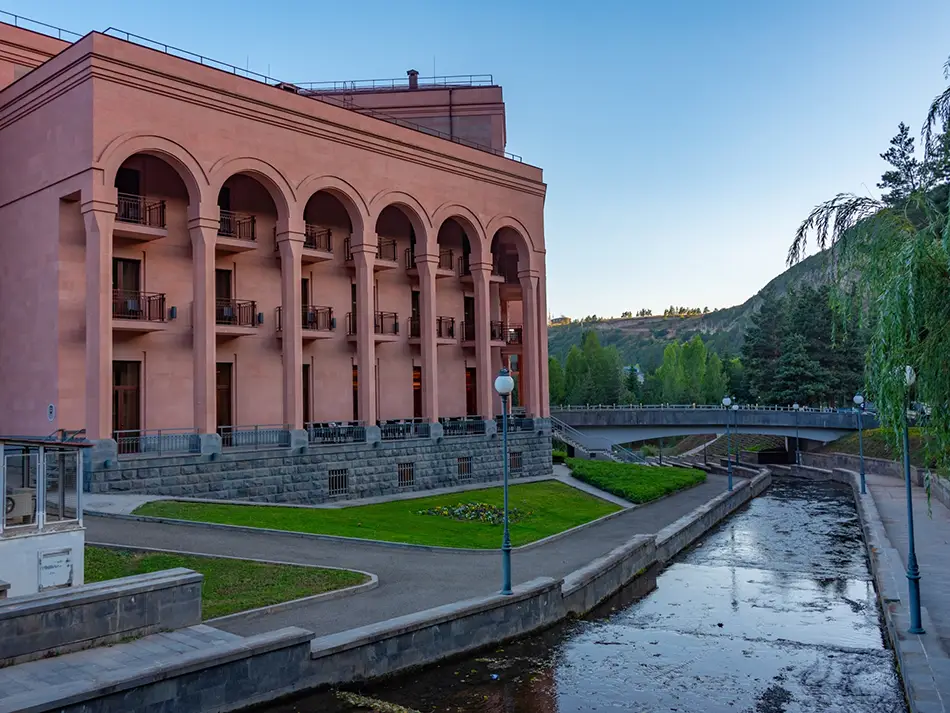
Jermuk is a spa town recognized for its waterfalls, healing mineral waters, and an alpine setting. It has been a popular destination for health and relaxation for many years.
Highlights:
- Jermuk Waterfall: A 70-meter waterfall within a rocky canyon.
- Soviet-era sanatoriums: Large wellness centers that showcase a blend of past grandeur and health focus.
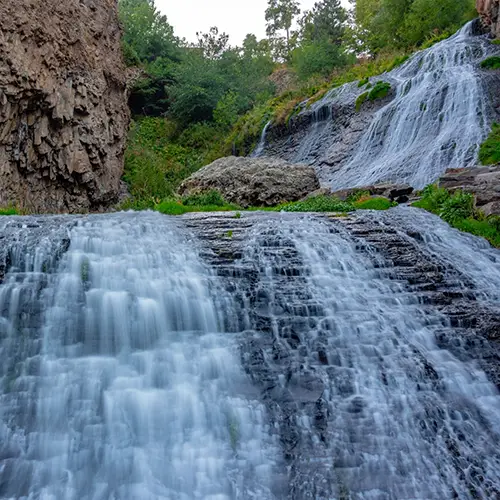
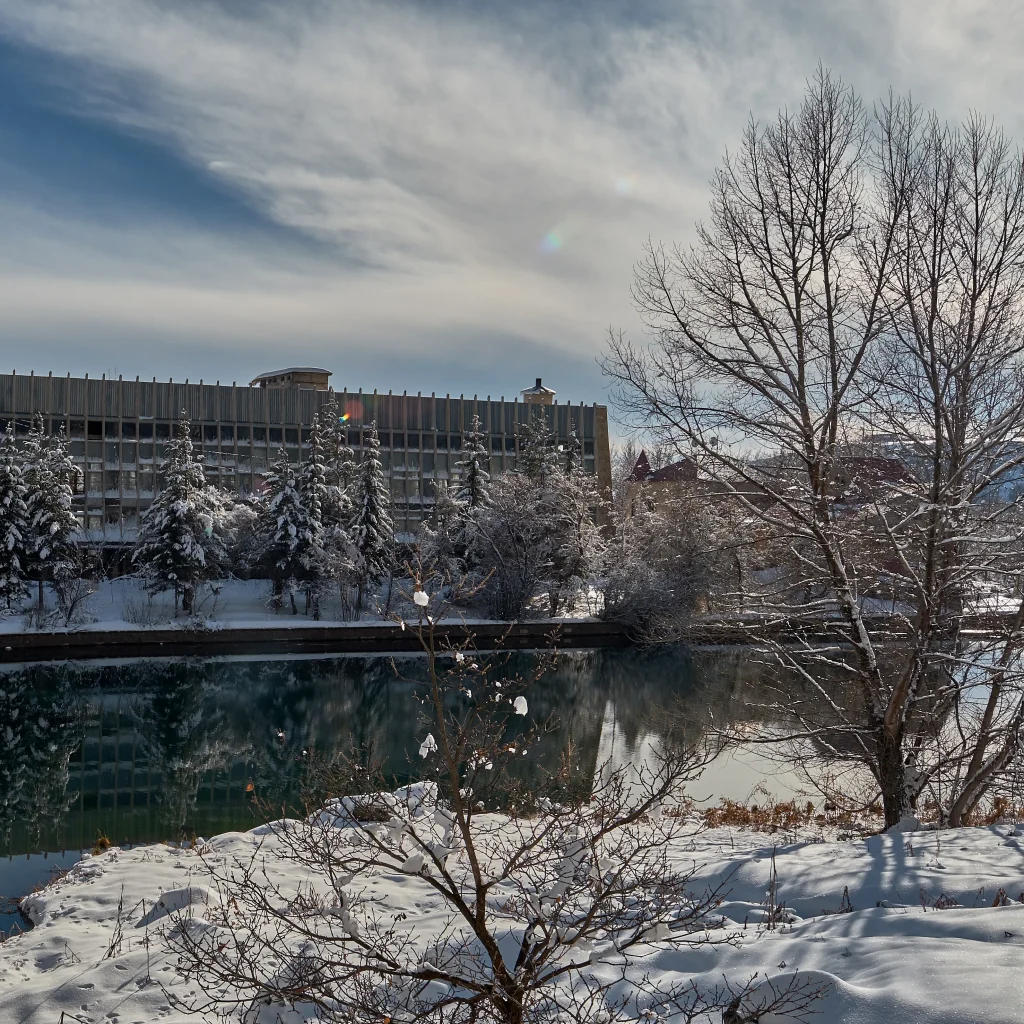
How to get there: Direct marshrutkas to Jermuk depart from Southern Bus Station (Sasuntsi David Metro Station) . The trip usually takes about 3 hours.
Where to stay: Jermuk’s accommodation largely consists of sanatoriums and health resorts that offer medical treatments alongside lodging. There are also smaller hotels and guesthouses available.
Could it be the perfect destination for you? Our Jermuk Guide will help you find out.
Insider Tip
Many sanatoriums in Jermuk offer day passes for their mineral water pools and treatments, even if you’re not staying overnight, allowing you to experience the therapeutic benefits.
Gyumri: City of Arts and History
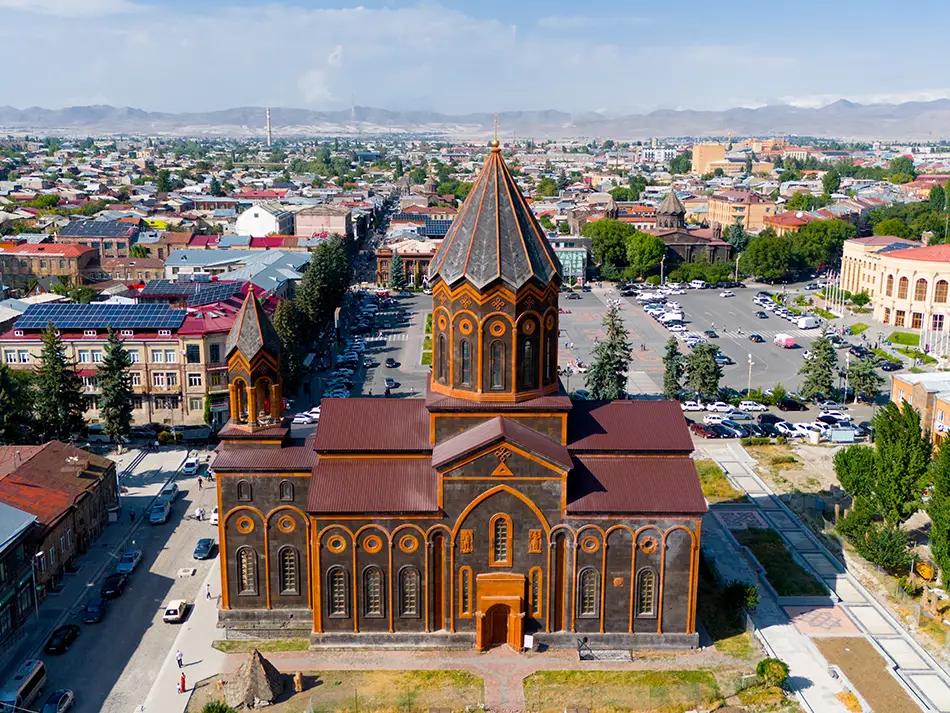
Armenia’s second-largest city, Gyumri, possesses an artistic character and features preserved 19th-century architecture. It offers a different perspective on Armenian urban life, with its unique architectural style and creative community.
Highlights:
- Black tuff architecture: The Kumayri Historic District displays buildings made from black tuff stone, characteristic of Gyumri.
- Local art scene: Explore studio cafes and galleries showcasing works by local sculptors and painters.
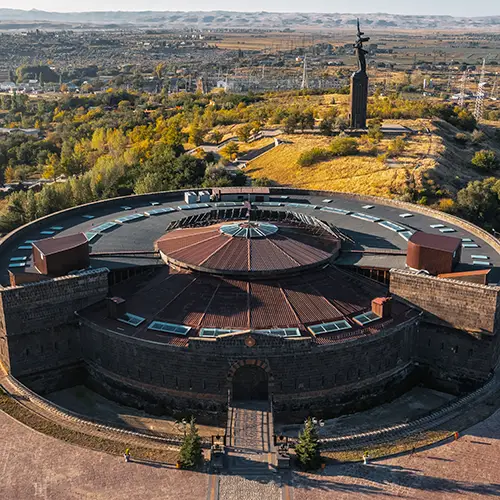
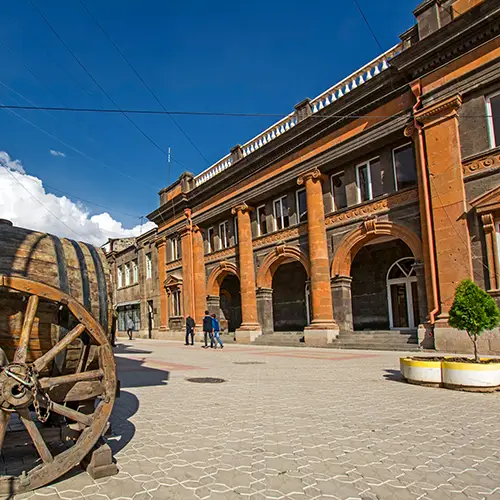
How to get there: Marshrutkas and trains connect Yerevan to Gyumri. Marshrutkas depart from Yerevan’s Northern Bus Station and take approximately 2 hours. For a scenic alternative, trains depart from Yerevan’s Central Railway Station (Sasuntsi David Metro Station). Tickets can be purchased directly at the station.
Where to stay: Gyumri has a growing number of boutique hotels, guesthouses, and art-themed accommodations, particularly within its historic center, allowing visitors to experience the city’s artistic vibe.
Interesting to know: Gyumri’s distinctive black tuff architecture, especially seen in structures like the Black Fortress, played a significant role in the city’s defense during the 19th-century Russo-Turkish conflicts, highlighting its strategic importance.
Explore all the best things to do in Gyumri.
Fun Fact
The city is home to Armenia’s oldest brewery, established in 1898, offering a taste of local beer history.
Tatev (Halidzor): Mountain Monastery
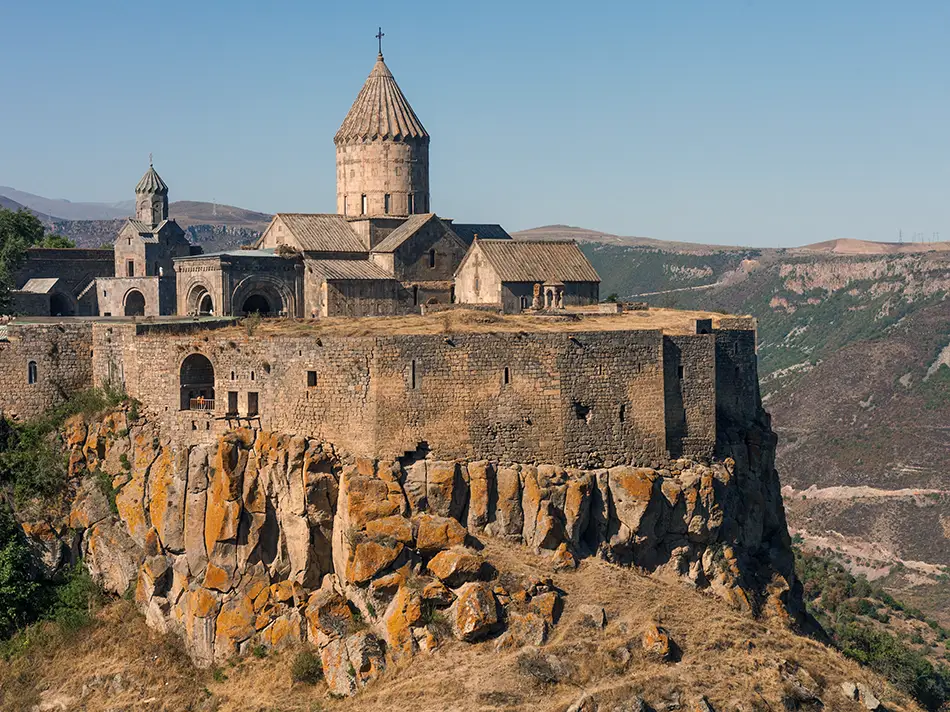
Tatev, a remote mountain area accessible from the village of Halidzor, is home to one of Armenia’s most significant monasteries, set against a backdrop of deep gorges.
Highlights:
- Tatev Monastery: A medieval monastery complex positioned above the Vorotan Gorge.
- Wings of Tatev cable car: The longest non-stop reversible aerial tramway in the world, providing views of the landscape.
- Vorotan Gorge hikes: The village serves as a trailhead for several rewarding routes, from short viewpoint walks along the gorge rim to longer treks that link Tatev, Devil’s Bridge, and other historic monasteries locations.
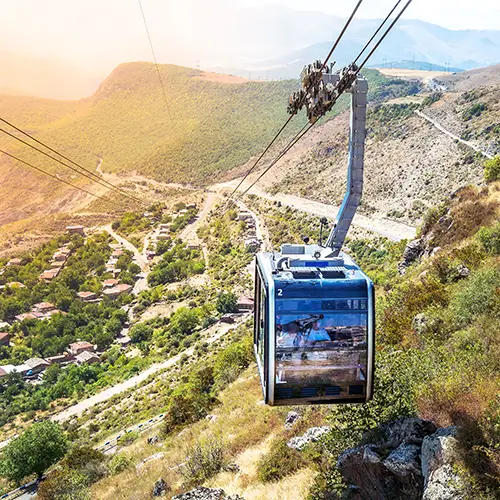
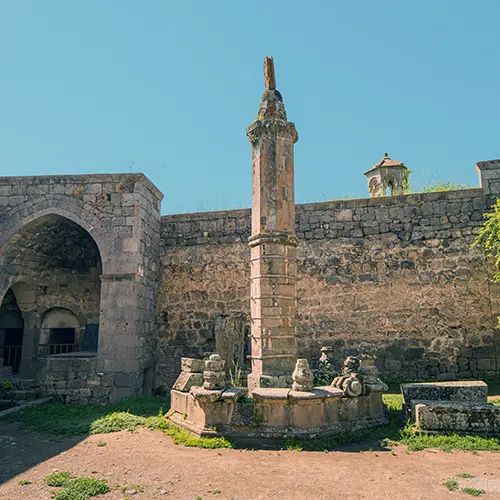
How to get there: To reach Tatev, first take a marshrutka from Yerevan’s Southern Bus Station to Goris (4-5 hours). From Goris, local taxis or shared vans can take you to Halidzor (about 30-40 minutes), where the Wings of Tatev cable car begins. The cable car is the easiest way to reach the monastery itself.
Where to stay: In Halidzor and the villages near Tatev, you’ll find guesthouses and a few small hotels that offer views of the surrounding landscapes. Staying in Goris and taking a day trip to Tatev is also a common option.
Read more on best things to do in Halidzor
Fun Fact
The “Swinging Pillar” (Gavazan) within Tatev Monastery is a unique medieval seismic column designed to warn against earthquakes. It would sway when tremors occurred, indicating the need for evacuation.
Sevan: Lakeside Serenity
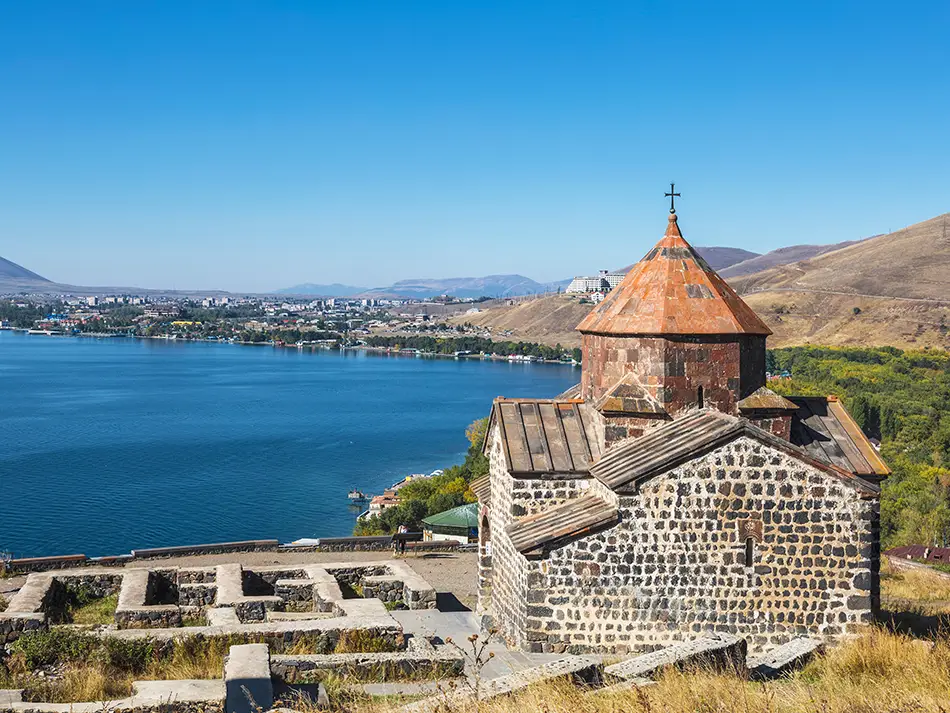
Lake Sevan is a popular lakeside destination with wide views and a notable monastery located on a peninsula. It is a favored spot for both relaxation and outdoor activities.
Highlights:
- Sevanavank Monastery: A black-stone church complex situated on a peninsula overlooking the lake.
- Lake Sevan’s Waters: The clear blue waters of the high-altitude lake.
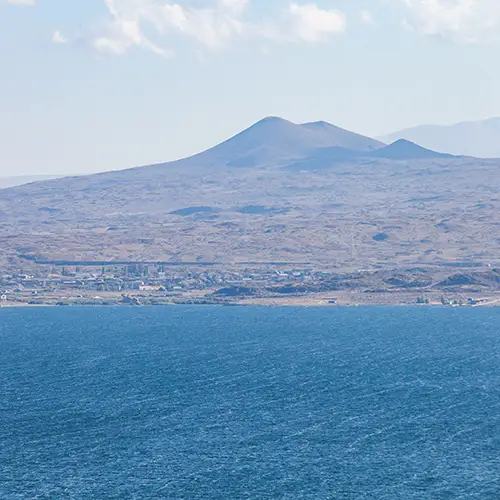
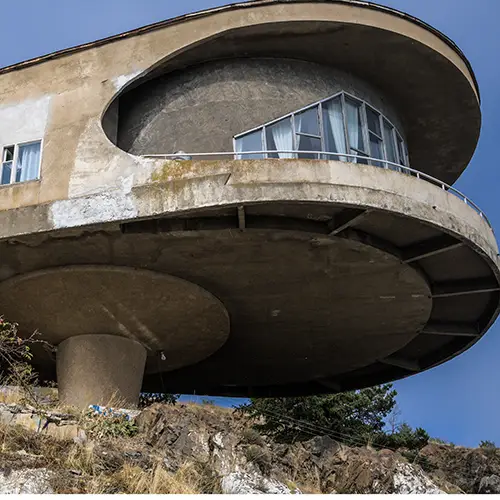
How to get there: Marshrutkas frequently depart from Yerevan’s Northern Bus Station to Sevan town. The journey is about 1 to 1.5 hours. For Sevanavank Monastery, you can take a local taxi from Sevan town or walk if you enjoy a longer stroll.
Where to stay: Along the shores of Lake Sevan, there are various resorts, hotels, and guesthouses, particularly popular during the summer months. Options range from budget hostels to more comfortable lakeside accommodations.
Read more on best things to do in Sevan here.
Fun Fact
Sevanavank Monastery was originally built on an island in Lake Sevan in 874 AD. However, due to Soviet-era water level reduction projects, the island became a peninsula, allowing easier access to the monastic complex.
Areni: Wine Village
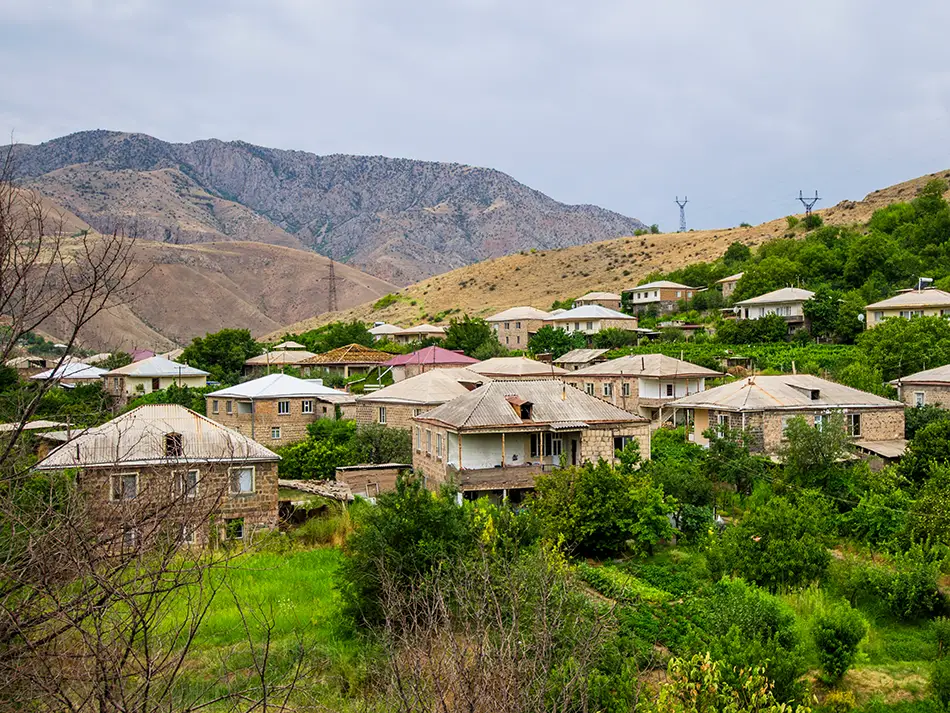
Areni is a wine village located in the Vayots Dzor region, surrounded by cliffs and caves. It is a key area for Armenian grape cultivation and winemaking history.
Highlights:
- Areni-1 Cave: The archaeological site of the oldest known winery in the world.
- Noravank Monastery: A 13th-century monastery built into a narrow gorge, known for its architecture.
- Wine tastings: Opportunities to taste local wines, often produced using traditional methods.
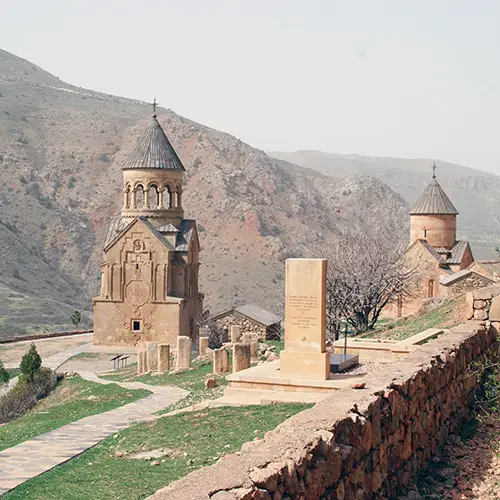

How to get there: Marshrutkas to Areni depart from Yerevan’s Southern Bus Station. The trip takes about 2.5 to 3 hours. Local taxis are also an option for reaching nearby sites like Noravank Monastery from Areni.
Where to stay: Areni offers guesthouses and a few small hotels, many of which are family-run and can arrange wine tastings or visits to local wineries.
Check our Areni Guide for more details.
Fun Fact
The Areni-1 Cave not only yielded the world’s oldest known winery but also the world’s oldest leather shoe (dating to around 3600-3500 BC), found preserved in the same cave.
Alaverdi: Sacred Sites and Industrial History
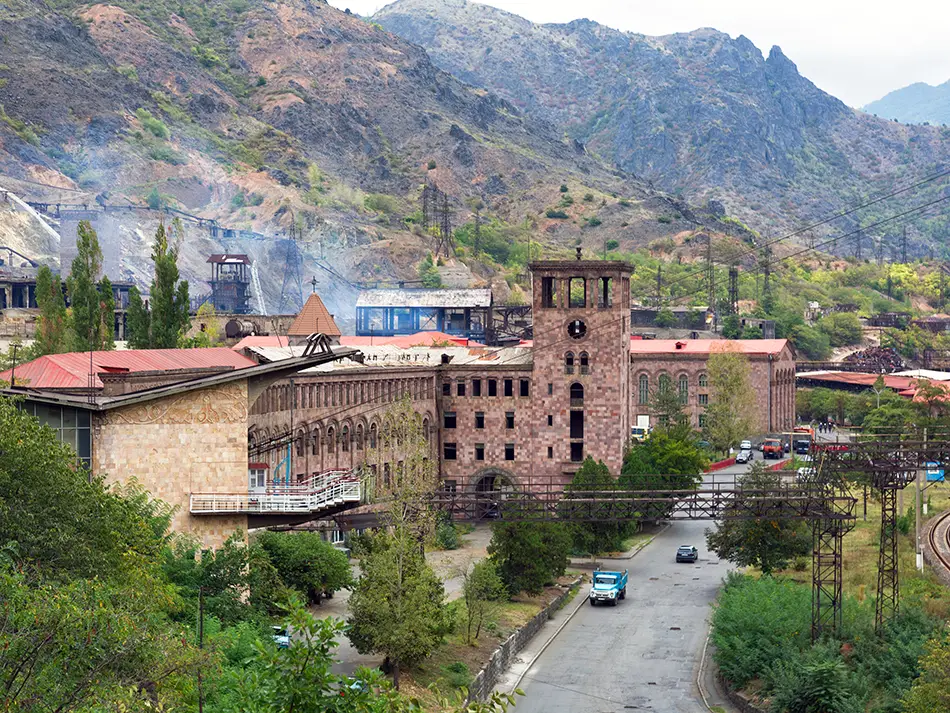
Alaverdi is an industrial town in the Lori Province, notable for the ancient monasteries located in its surrounding canyons. It provides a contrast between industrial heritage and historical religious sites.
Highlights:
- Sanahin & Haghpat Monasteries: UNESCO World Heritage Sites, these monastic complexes are well-preserved examples of medieval Armenian architecture.
- Soviet-era infrastructure: Glimpses of the town’s industrial past, including old cable cars.
Historical Context
Alaverdi was historically a significant mining town, and remnants of its industrial past, including old cable cars and factory structures, offer a unique contrast to the ancient monasteries.
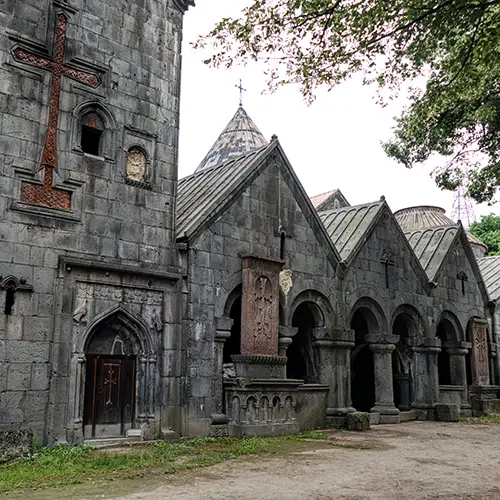

How to get there: Marshrutkas to Alaverdi can be taken from Yerevan’s Kilikia Central Bus Station or Northern Bus Station. The journey can take 3.5 to 4.5 hours. Trains also run from Yerevan to Alaverdi. To reach the monasteries (Sanahin, Haghpat), local taxis are the best option from Alaverdi.
Where to stay: Accommodation in Alaverdi includes a few hotels and guesthouses. Many visitors prefer to stay in nearby Dilijan or Vanadzor and visit Alaverdi as a day trip.
Plan your Alaverdi trip with our guide.
Garni: Pagan and Christian Heritage
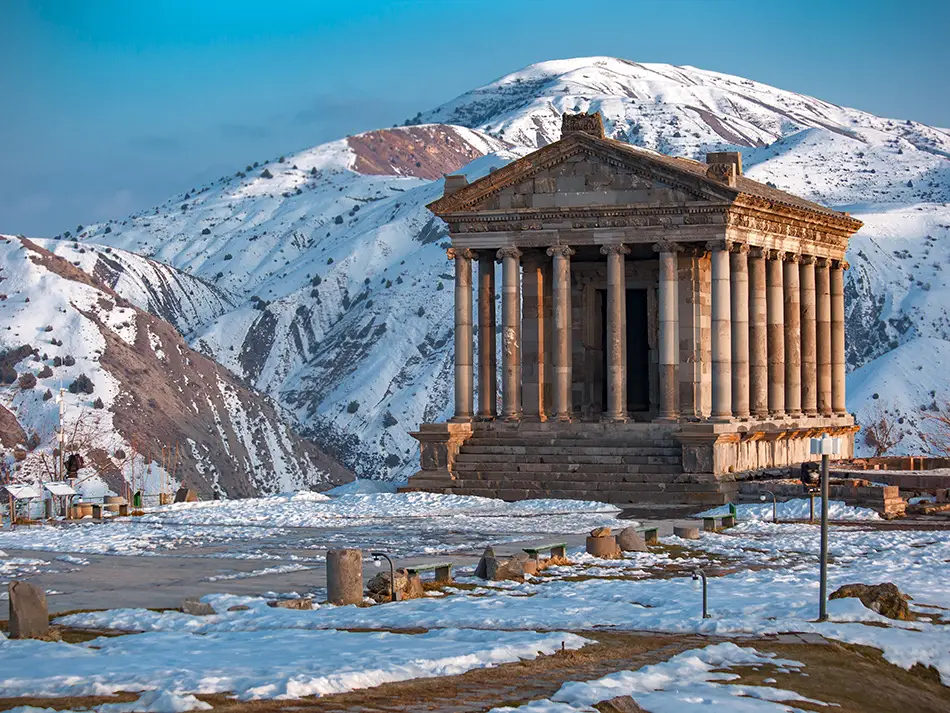
Garni is a village near Yerevan with both pagan and Christian historical sites, located in a scenic area with a deep gorge.
Highlights:
- Garni Temple: The only standing Greco-Roman colonnaded temple in the Caucasus.
- Symphony of Stones: Natural basalt column formations in the gorge, resembling organ pipes.
- Homemade lavash baking: Observe lavash making in traditional underground tonirs.
Fun Fact
Near the Garni Temple, you can also find the ruins of a Roman bathhouse with a well-preserved mosaic floor, indicating the site’s importance beyond just a temple.
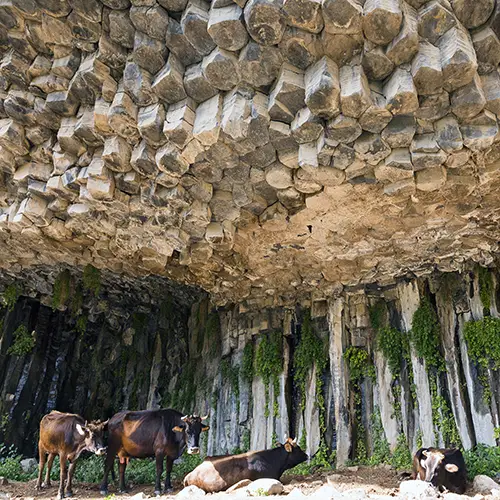
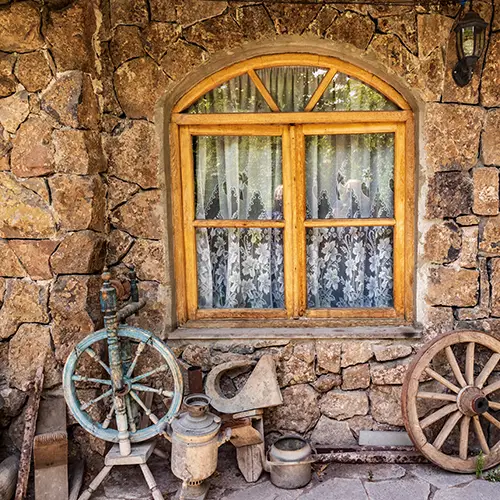
Public bus routes (such as buses #266 and #284) depart to Garni village from Yerevan’s Gai Bus Station, which is more of a designated street stop than a traditional station. The journey takes about 45 minutes to an hour. Be aware that the initial location for Gai Bus Station on Google Maps might be incorrect, so double-check your exact pickup spot.Taxis are also a convenient option for a shorter trip from Yerevan.
Where to stay: Garni offers a variety of guesthouses and a few boutique hotels, some providing views of the temple or the gorge. Many visitors choose to visit Garni as a day trip from Yerevan.
Byurakan: Stargazing Near Mount Aragats
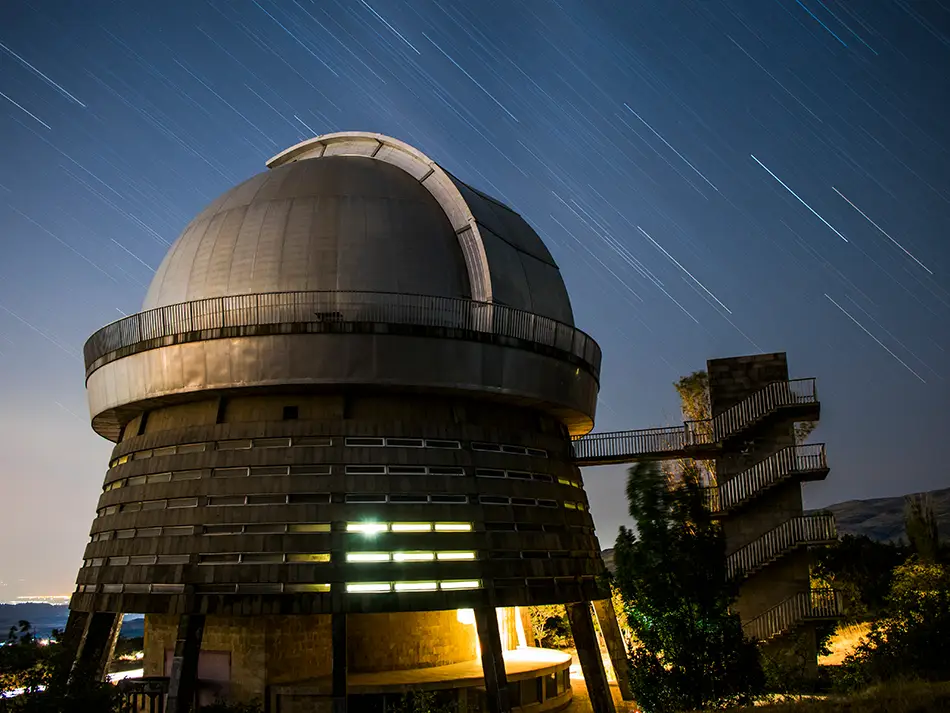
Byurakan, located at an approximate altitude of 1,400 meters (4,600 feet), is a quiet village on the skirts of Mount Aragats, known for its astronomical observatory. It can also serve as a convenient base for exploring the higher reaches of Mount Aragats, offering access to hiking trails and historical sites on its lower parts.
Highlights:
- Byurakan Observatory: Observe the observatory domes, significant for astronomical research.
- Mount Aragats: Armenia’s highest peak, offering opportunities for hiking and enjoying high-altitude views.
- Kari Lake: A mountain lake also found on the slopes of Aragats, which can be frozen or shimmering depending on the season, and is not far from Byurakan.
- Amberd Fortress: A well-preserved medieval fortress and church complex located high on the slopes of Mount Aragats, offering views.
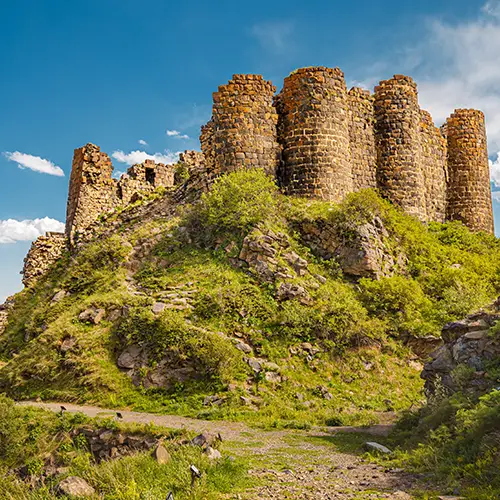
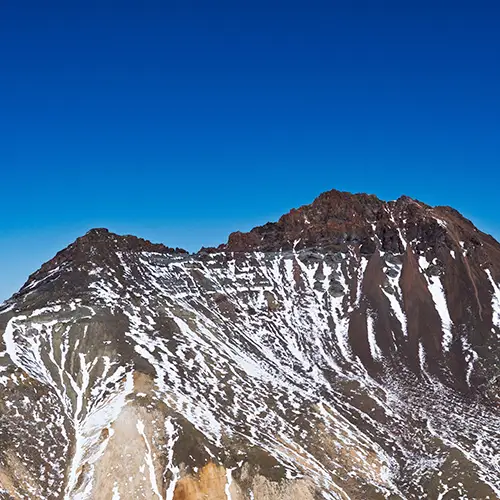
How to get there: Bus #519 connects Yerevan (Kilikia Bus Station) to Byurakan. The bus schedule can be specific, so it’s advisable to check current timings. The journey takes about 1.5 to 2 hours. Taxis are also an option.
Where to stay: Byurakan offers a few guesthouses and a hotel, providing tranquil stays near the mountain. For summiting Mount Aragats, some hikers prefer the basic accommodation at Kari Lake or camping there, as it offers direct trailhead access and aids acclimatization.
Good to Know
The observatory conducts public tours, providing an opportunity to learn about Armenia’s contributions to astronomy and, on clear nights, observe celestial bodies through telescopes.
Building Your Perfect Armenia Itinerary
Armenia’s compact size and developing transport infrastructure make it feasible to design an itinerary that avoids excessive back-and-forth travel. Many key destinations are connected, allowing for logical routes. For example, after exploring Yerevan, you can travel north to Dilijan and Alaverdi, then head south towards Sevan, Garni, and further to the wine region of Vayots Dzor (Areni, Yeghegnadzor), and finally down to Goris and Tatev.
You can explore Armenia as a standalone destination, typically allowing for a comprehensive experience within 7-10 days. However, its geographical position also makes it an excellent part of a multi-country trip.
Many travelers seamlessly combine Armenia with neighboring Georgia via land border crossings, and it can also serve as a gateway or a final stop for those traveling to or from Iran. Be sure to check our dedicated Armenia Itinerary Guide for pre-made plans and suggestions to inspire your journey.





